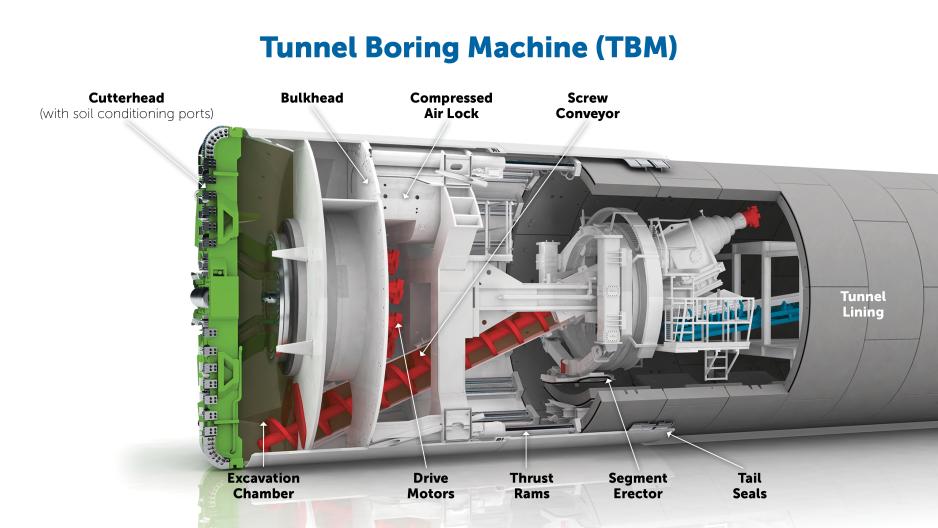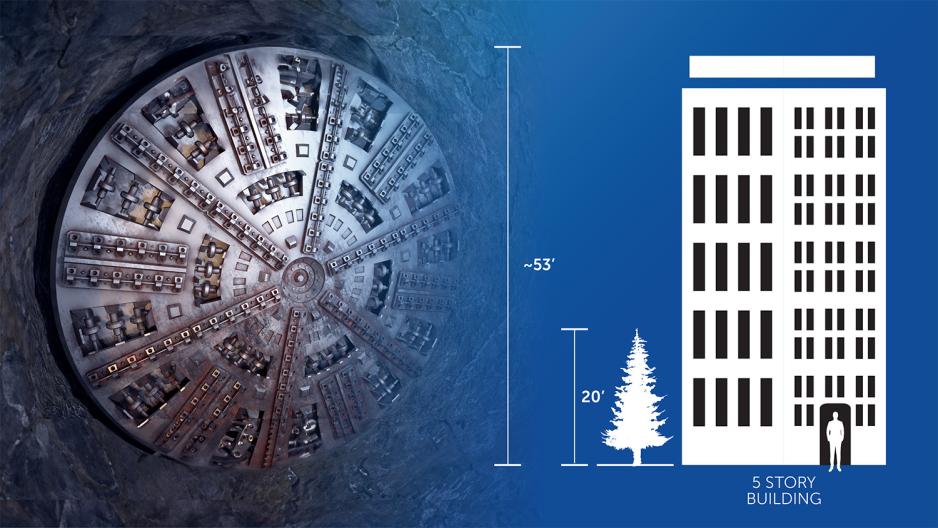VTA just reached a major milestone with the purchase of the Tunnel Boring Machine (TBM) that will dig the tunnel for the BART Silicon Valley Phase II Project (BSVII). The tunnel will contain five miles of train tracks in both directions and three station platforms to provide safe and efficient travel separated from congested roadways. This $76 million TBM will be one of the largest machines ever to be built. Multiple payments will be made to the manufacturer at key milestones of design, production, delivery, assembly, and launch of the TBM.
VTA will be launching a TBM naming contest in advance of the TBM arrival. Stay tuned to learn more about that contest!
What is a TBM?
The first TBM used in the United States was in 1853 in Massachusetts for the Hoosac Tunnel. The technology of TBMs has advanced significantly since that time, resulting in the large machines we see today!
A TBM will remove soil deep from underground forming the tunnel, while keeping the street above intact, like a mole. The front of the TBM includes a cutter-head, which rotates to dig through soil and rock. That material will then be removed through a conveyor system within the machine. More details on the tunneling methodology and how a TBM operates can be found on the Project Construction webpage.
Size of TBM
The TBM will be nearly 54 feet in diameter and is being specifically designed and built to meet this project’s unique characteristics and requirements. The size of the tunnel was determined by the space needed for the tracks, trains, boarding platforms and other equipment and facilities needed in the tunnel to operate safely and efficiently. Massive cement tunnel lining segments will be installed as soil is removed to create the structurally sound tube underground.
The thickness of the tunnel lining is based on the pressure from the soil and water surrounding the tunnel and important safety requirements in the event of an earthquake. The inner diameter of the tunnel will be 48 feet and the exterior of the tunnel will be just under 52 feet.
Manufacturing of the TBM
The TBM will be purchased from Herrenknecht, a German manufacturing company that specializes in building customized tunneling equipment such as TBMs for projects worldwide. Herrenknect will design, manufacture, assemble, test, and then disassemble the TBM at their factory in Schwanau, Germany. The TBM will be uniquely designed to operate in areas with higher water tables and the geology of sands, gravel, silts, and clays in the South Bay.
Approximately 18 months after manufacturing begins, the TBM will be shipped from Kehl, Germany across the ocean to California to be reassembled on-site at the West Portal, located at the future Newhall Yard. Reassembling the TBM will take approximately 6 months on-site before it is ready to be launched.
The TBM will launch at the West Portal and will dig 30 to 40 feet each day traveling east towards the Berryessa/North San Jose BART Station, taking approximately 3 to 4 years to complete the 5-mile-long tunnel. Once tunneling is complete, the TBM will emerge above ground at the East Portal on the east side of US 101 near Las Plumas Avenue.
In preparation for the TBM arriving, VTA will be preparing the West Portal for tunneling operations by constructing on-site access points, excavating the portal, constructing, and operating the facilities needed to produce the tunnel lining, and establishing the excavated materials bin. The West Portal Construction webpage has more details on these activities.


